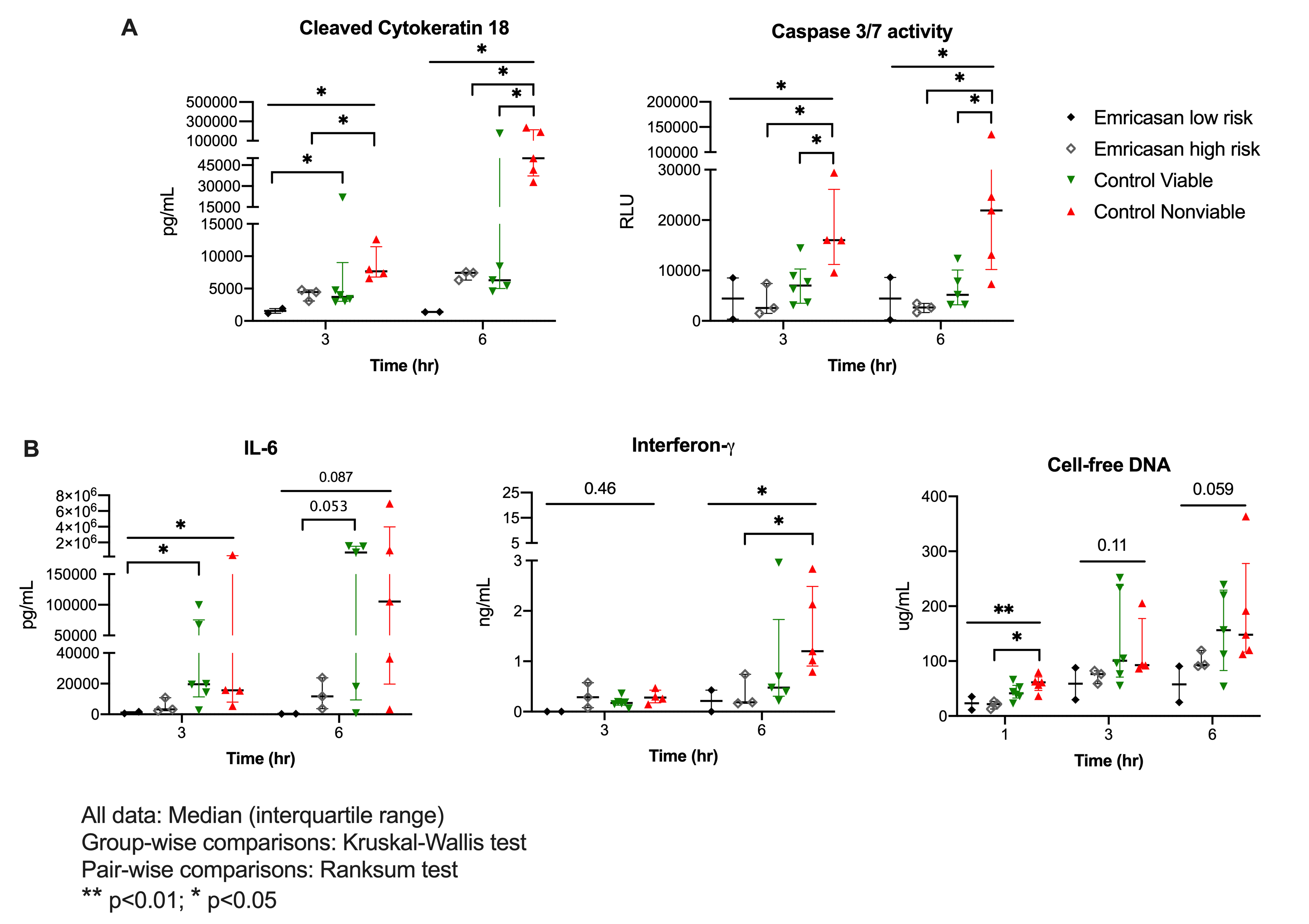Inhibition of Apoptosis During Ex Situ Liver Normothermic Machine Perfusion Decreases Reperfusion Injury and Improves Viability
1Transplant Surgery, Massachusetts General Hospital, Boston, MA, 2Pediatric Endocrinology, Brown University, Providence, RI
Meeting: 2021 American Transplant Congress
Abstract number: 611
Keywords: Apoptosis, Liver preservation, Machine preservation, Warm ischemia
Topic: Basic Science » Ischemia Reperfusion & Organ Rehabilitation
Session Information
Session Name: Ischemia Reperfusion & Organ Rehabilitation
Session Type: Poster Abstract
Session Date & Time: None. Available on demand.
Location: Virtual
*Purpose: Normothermic machine perfusion (NMP) is an ideal platform for delivery of novel therapeutics aimed at rehabilitation of discarded or marginal livers. We examined the efficacy of inhibiting apoptosis during NMP as a means of mitigating ischemia-reperfusion injury (IRI) and improving liver viability.
*Methods: 5 human livers from donation after circulatory death (DCD), turned down by all regional transplant centers, underwent 12 hours of NMP with the addition of an irreversible pan-caspase inhibitor, emricasan, at a dose of 5mg/kg liver. Liver viability during NMP was assessed using criteria established by Mergental et al. Outcomes were compared to two control groups of discarded DCD livers stratified by viability (Table 1). Subgroup analysis was performed by stratifying the treatment group into low and high donor risk index (DRI) groups. RNA sequencing was performed on sequential liver biopsies. Median with interquartile range (IQR) reported for all data.
*Results: Nonviable control livers demonstrated significantly higher markers of apoptosis (cleaved cytokeratin 18, caspase-3/7 activity) than viable control livers during NMP (Fig. 1A). Addition of emricasan significantly decreased apoptosis. Emricasan-treated livers further demonstrated decreased IRI markers (Interleukin-6, interferon-gamma, cell-free DNA, Fig. 1B). Median DRI in the high DRI treated group was 3.0 (IQR 2.8,3.6) compared to 2.4 (2.2,2.4) in nonviable control livers (p=0.099). Despite the increased ischemic injury, 2 of 3 high DRI treated livers met viability criteria compared to 0/5 (p=0.035). There was no evidence of deleterious drug effect in the low DRI treated livers.
*Conclusions: The magnitude of apoptosis appears to be associated with graft viability during NMP. A single dose of the pan-caspase inhibitor, emricasan, decreased apoptosis and markers of IRI and appeared to improve graft viability within 6 hours of NMP. Therapeutic inhibition of apoptosis may be a simple and effective method for improving graft utilization and minimizing graft dysfunction.
| Emricasan | Control Viable | Control Nonviable | ||
| Low DRI (n=2) | High DRI (n=3) | (n=6) | (n=5) | |
| Warm ischemic time (min) | 22.5 (22-23) | 32 (23-53) | 27.5 (24-28) | 24 (23-34) |
| Cold ischemic time (min) | 450 (347-553) | 703 (679-758) | 625.5 (458-697) | 358 (357-367) |
| Age | 27 (26-28) | 59 (50-60) | 58.5 (40-60) | 56 (55-59) |
| Donor risk index | 1.6 (1.5-1.7) | 3.0 (2.8-3.6) | 2.1 (1.9-2.2) | 2.4 (2.2-2.4) |
To cite this abstract in AMA style:
Raigani S, Baptista S, Ohman A, Santiago J, Rosales I, Heaney M, Boylan J, Coe T, Uygun K, Sanders J, Yeh H. Inhibition of Apoptosis During Ex Situ Liver Normothermic Machine Perfusion Decreases Reperfusion Injury and Improves Viability [abstract]. Am J Transplant. 2021; 21 (suppl 3). https://atcmeetingabstracts.com/abstract/inhibition-of-apoptosis-during-ex-situ-liver-normothermic-machine-perfusion-decreases-reperfusion-injury-and-improves-viability/. Accessed December 10, 2025.« Back to 2021 American Transplant Congress

